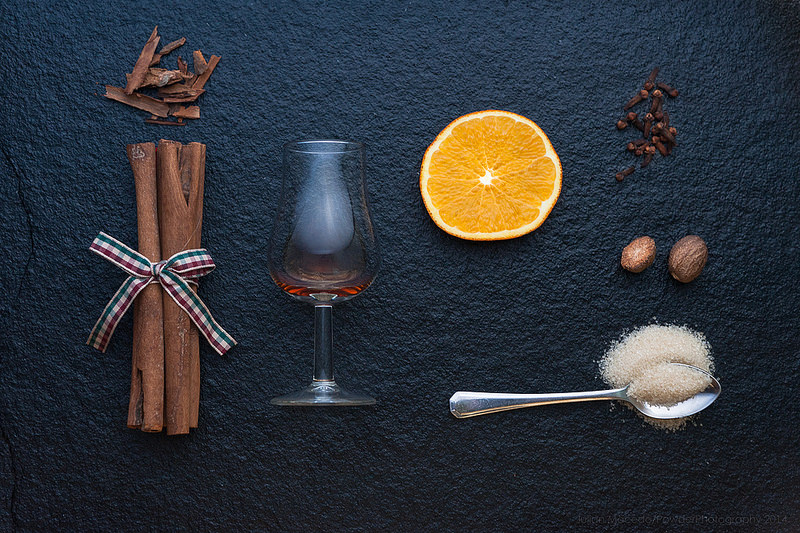 Photo by PowderPhotography
Photo by PowderPhotography
Spicy, warming and oh so fragrant, mulled wine is a traditional winter drink. There are variations throughout the colder countries in Europe from glogg in Sweden and gluhwein in Germany to vin chaud in France, but they all begin with a warmed wine or spirit, seasonal citrus, and holiday spices.
The origins for mulling wine are based more in practical matters than any festive and romantic holiday celebrations. Once upon a time, wine was not something we collected and aged in cellars. It was an everyday agricultural product that was meant to be consumed soon after it was bottled. Less than perfect bottling and storage methods meant that wine, which was traditionally bottled after harvest in the early fall, had started to go more than a bit off by winter. Spices were added to postpone spoilage and, well, make wine that had gone off taste slightly less nasty. Hence, the consumption of mulled wine became a mid-winter, holiday tradition. We now drink mulled wine for tastier reasons.
The exact combination of spices change from country to country, but mulled wine generally starts with a fruity red wine base —like Merlot, Cabernet, or Beaujolais— and adds cinnamon, cloves, star anise, juniper, ginger, citrus or cardamom. Think seasonal, warming spices and add orange or lemon peel for brightness. It’s kind of like a warm winter sangria. Play around to find the combination that you like best. Here’s a historical British recipe adapted from Mrs. Beeton’s Book of Household Management (first published in 1861) to get you started. To make your own batch, use a non-reactive saucepan or a slow cooker, and consider adding a splash of brandy, port, or spirits to up the potency.
Mulled Wine
To every 600ml (1 pint) of Wine allow:
235ml (8 fl oz) Water
Sugar, to taste
Spice (Cloves, Grated Nutmeg and Cinnamon or Mace), to taste
Per Mrs. Beeton: In making this, it is very difficult to give the exact proportions of ingredients like sugar and spice, as what quantity might suit one person would be to another quite distasteful. Boil the spice in the water until the flavour is extracted. Add the wine and sugar and bring to boiling point, then serve with strips of crisp dry toast or with biscuits. The spices usually used for mulled wine are cloves, grated nutmeg and cinnamon or mace. Any kind of wine may be mulled, but port and claret are those usually selected for the purpose and the latter requires a very large proportion of sugar. The vessel that the wine is boiled in must be delicately clean and should be kept exclusively for the purpose.